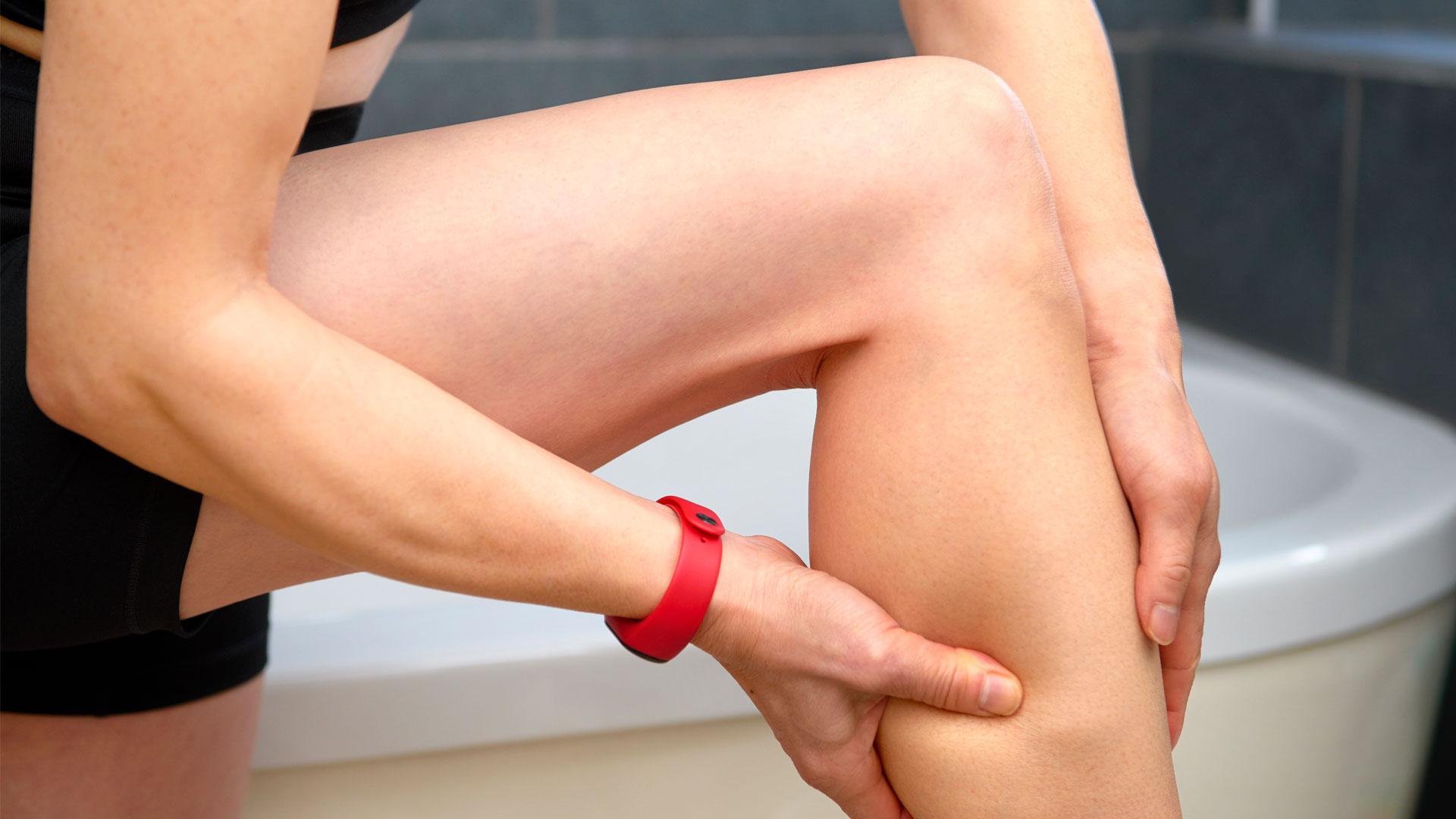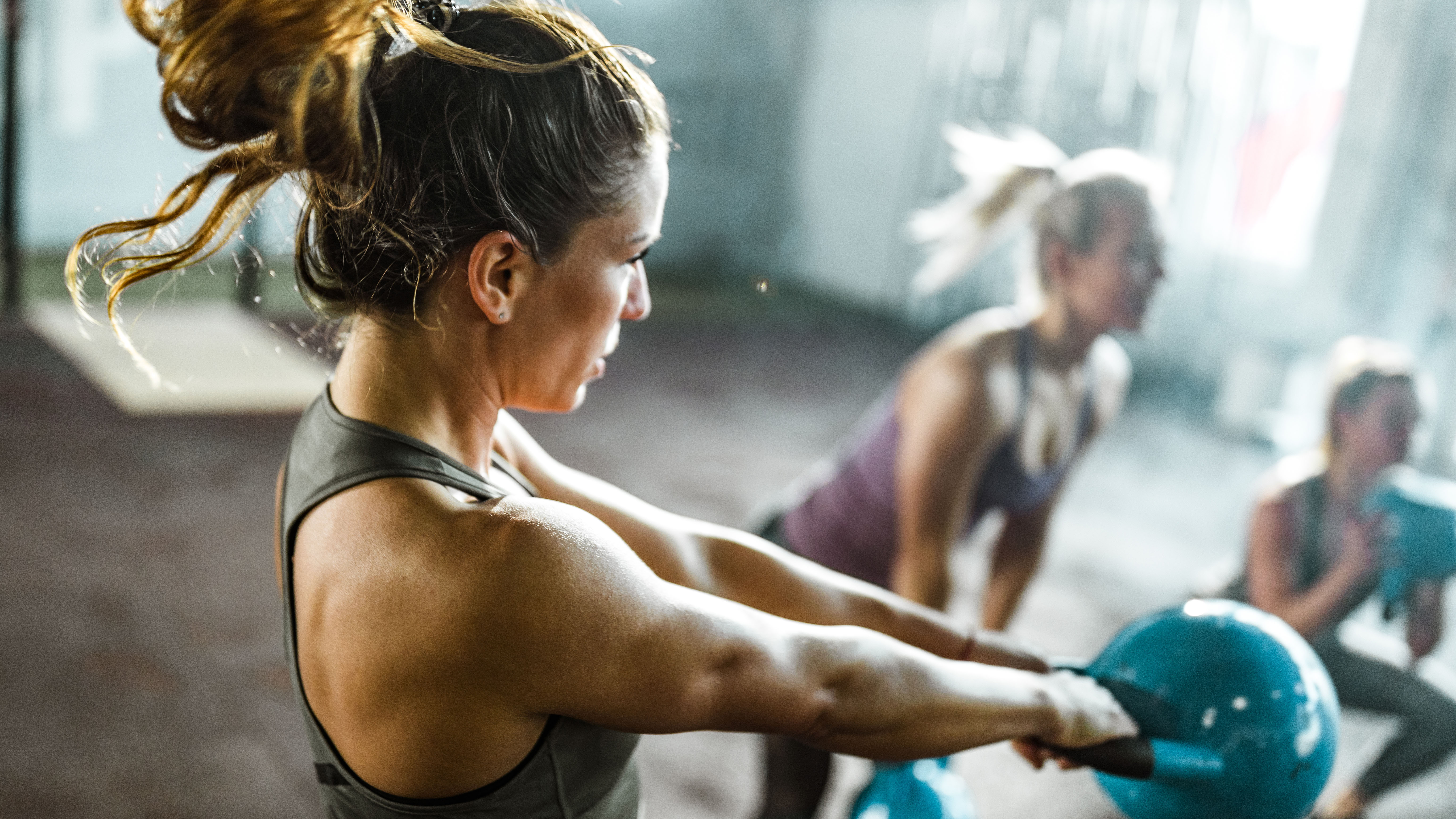What is DOMS?
Wondering what is DOMS? We’re getting to the bottom of what this exercise-induced condition is and how you can avoid it

What is DOMS? DOMS stands for delayed onset muscle soreness. Without knowing it, it’s likely you and almost everyone who has exercised has had experience of DOMS, especially if the workout was vigorous and at an intensity you were unaccustomed to.
DOMS is often characterized by a certain set of symptoms, including muscle soreness and tenderness. But according to research published in the International Journal of Environmental Research and Public Health, there are some ways you can relieve these aches and pains. For example, the best massage guns can help you soothe this soreness. And the same goes for a warm and inviting bath, along with light stretches.
But first, to get to the bottom of what is DOMS and whether you can avoid suffering from this exercise-induced condition, we turned to science and spoke to an expert to find out everything there is to know.
- Related: How to get stronger
What is DOMS?
“DOMS stands for ‘delayed onset muscle soreness’,” says Leo Arguelles, assistant clinical professor at the Department of Physical Therapy at the University of Illinois. “This is a benign exercise-induced condition that develops after unaccustomed, vigorous, and often fatiguing physical activity.”
Symptoms include:
- Localized muscle soreness
- Tenderness
- Stiffness
- Movement related pain
Although you won’t experience DOMS during your workout, scientists reporting their findings in the The Journal of Physiological Sciences say this soreness usually peaks after a pain-free 12 to 24 hour period, around 24 to 72 hours after exercise takes place and disappears within seven days of the physical activity.

Leonard D. Arguelles, PT, DPT, CCS is a spokesperson for the American Physical Therapy Association (APTA) and a Visiting Clinical Assistant Professor in the University of Illinois Chicago's PT department. Leo graduated from the same department in 2008 and began working as an acute care physical therapist at Swedish Covenant Hospital, specializing in critical care and cardiopulmonary rehabilitation. He is a board certified cardiovascular and pulmonary clinical specialist through the APTA, and enjoys marathon running, Brazilian Jiujitsu, and MMA.
What causes DOMS?
As stated in a review published in The Journal of Physiological Sciences, DOMS is quite a common consequence of ‘unaccustomed strenuous exercise’.

“Especially exercise containing eccentric contraction (lengthening contraction), in which muscle is being stretched while it is contracted” the review notes. “Its cause has been commonly believed to be micro-damage of the muscle and subsequent inflammation.”
When you build muscle, you're actually causing tiny tears to appear in your muscular fibre. The surrounding tissue around these tears will then flare up and feel sore and tight.
This means DOMS can occur while gaining muscle anywhere in the body. Think: the controlled downwards motion of a bicep curl, lowering yourself down from a pull up or rising up from a squat. It could even happen after playing an occasional game of basketball. And, as Arguelles notes, DOMS could also strike after putting your cardiovascular and musculoskeletal system to the test by clocking up some miles running.
He says: “For example, a common muscle group where DOMS occurs include the quadriceps after long distance running, especially if you are unaccustomed to running, or increasing the intensity or distance of the run.”
How can you avoid/prevent DOMS?
Research published in the Journal of Healthcare found one of the best ways to avoid DOMS was to control load intensity. And Arguelles agrees. He says: “DOMs can be avoided by slowly increasing your physical activity routine, not going too intense, too soon, and for too long, as the body needs time to accommodate to the workload.”
According to Arguelles, one way you could do this is by working out at around an 80% intensity when beginning a new activity or exercise, instead of going all out and working to your max capacity from the start. “Especially if you do not have a good idea where your baseline is at,” he adds. “Increase your activity no more than 10% per week.”

How can you treat DOMS if you’re suffering?
If muscle soreness, pain, and stiffness sounds all too familiar, consider these preventative and combatative measures:
Stretching
It’s long been proven that the benefits of stretching are huge. Along with relieving stress, stretching can help prepare your body for exercise and prevent injury. One study published in the International Journal of Sports Physical Therapy also found: “Static stretching is effective at increasing range of motion.”
By increasing your range of motion, it's less likely you'll suffer the muscle tears that cause DOMS.
Hot/cold therapy
Whether you prefer a lukewarm shower or hot bath, it’s been proven both hot and cold therapy can aid your DOMS recovery. A study in the Clinical Journal of Sports Medicine concluded that applying ‘low temperature heat wraps’ to the muscles in question was an effective way to prevent DOMS, helping to ‘increase flexibility of tissue and tissue blood flow’.
The same study also discovered that applying heat 24 hours after the workout might be less effective, but could help to reduce muscle pain.
Massage
Perhaps the best way to reduce DOMS? According to a 2018 study published in Frontiers in Physiology: “Massage seems to be the most effective method for reducing DOMS and perceived fatigue.”
And, as discovered by research published in The Journal of Athletic Training, massage can "alleviate DOMS by approximately 30% and reduce swelling".
It's likely this works by increasing blood flow to the area, which speeds up the healing process.
Wearing compression clothing
Compression clothing (otherwise known as garments that fit tight around the skin) could be used as a form of recovery. According to a study in the Journal of Exercise Rehabilitation: “Wearing compression garments during the postexercise period can be an effective way to reduce DOMS and accelerate the recovery of muscle function.”
Looking for more ways to recover? Discover the benefits of massage or how to perform a trigger point massage at home. Remember when you're working out to keep hydrated, take the rest you need, use hot and cold packs, and maybe even treat yourself to a massage.
This article is not meant to offer medical advice and readers should consult their doctor or healthcare professional before adopting any diet or treatment.
Sign up for the Live Science daily newsletter now
Get the world’s most fascinating discoveries delivered straight to your inbox.

Meg Walters is a freelance journalist and features writer. Raised in Canada and based in South East London, Meg covers culture, entertainment, lifestyle, and health. Her work has appeared in Cosmopolitan, i-D, Refinery29, Stylist, GQ, Shondaland, Healthline, HelloGiggles and other publications. When she's not writing, Meg is probably daydreaming about traveling the world, re-watching an old rom-com with a glass of wine, or wasting time on Twitter, where you can follow her @wordsbymeg.










